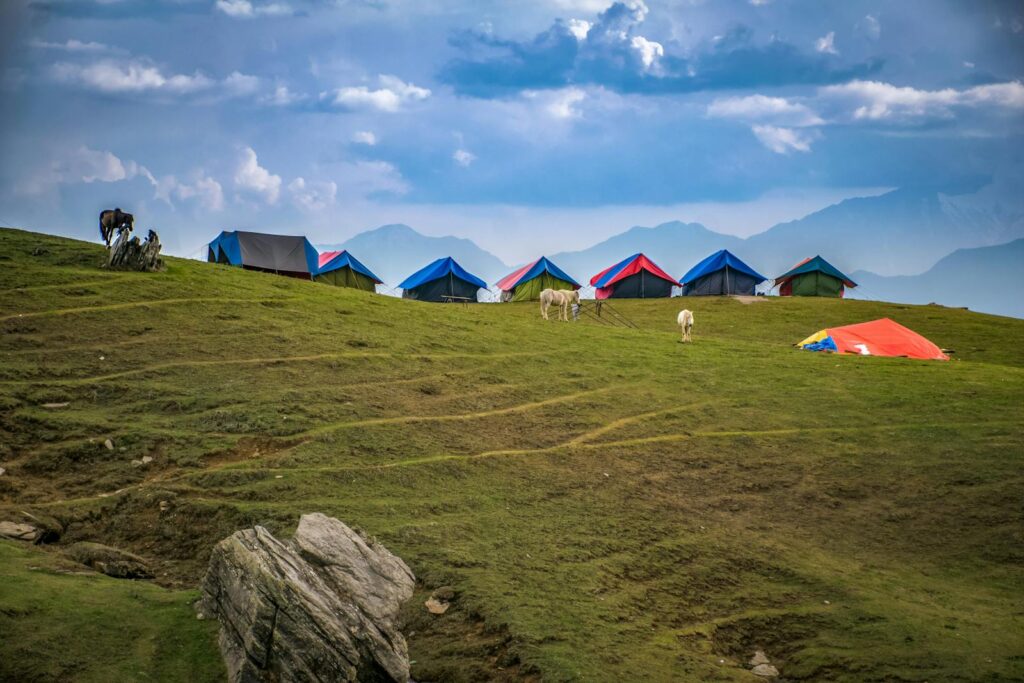The allure of horseback camping combines the timeless bond between humans and horses with the serenity of wilderness exploration. Unlike conventional camping, horseback camping—also known as horse packing or trail riding with overnight stays—offers a unique perspective on nature, allowing you to cover more ground while forming a deeper connection with your equine companion. This traditional mode of travel harkens back to when horses were essential for transportation, yet it remains a fulfilling adventure for modern outdoor enthusiasts. Whether you’re a seasoned equestrian looking to expand your horizons or a camping aficionado seeking a new challenge, proper planning is crucial for a safe, enjoyable experience that respects both the animals and the environment.
Understanding Horseback Camping Basics
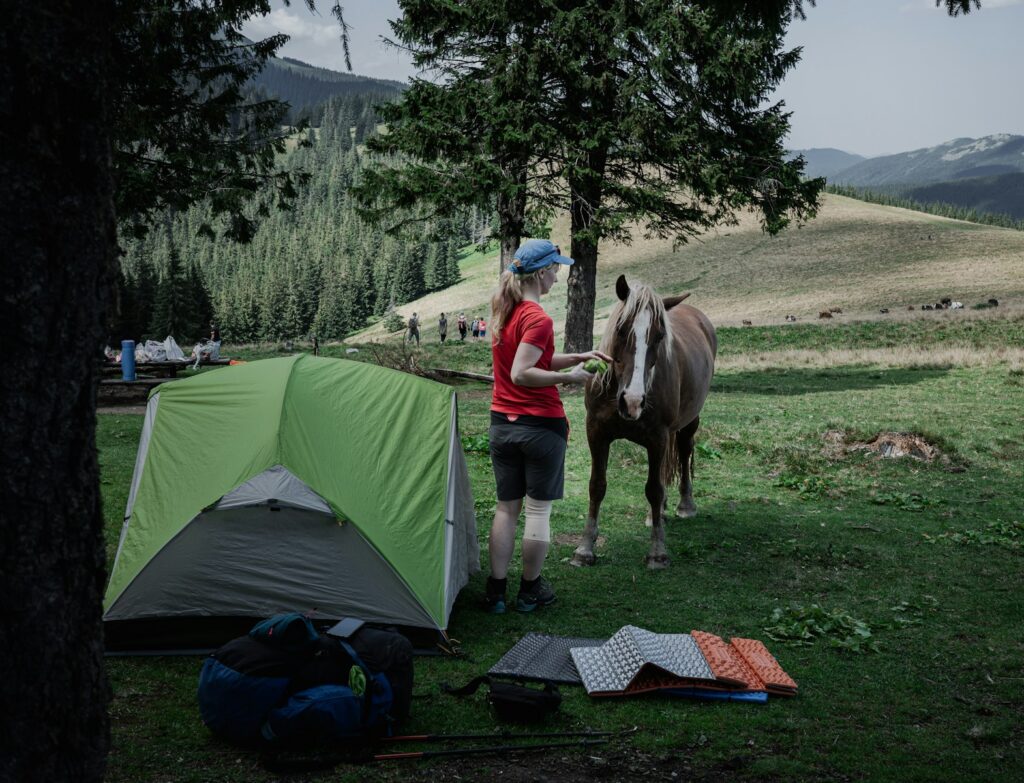
Horseback camping differs significantly from traditional camping, primarily because you’re responsible for the welfare of your equine companion alongside your own needs. Your horse requires adequate food, water, rest, and protection from the elements, much like you do. Planning must account for carrying capacity limitations—horses can typically carry about 20% of their body weight, including rider and gear. Time management also differs, as you’ll need to factor in horse care routines both morning and evening, along with adequate breaks during travel. This symbiotic journey creates a pace that’s both deliberate and rewarding, forcing modern campers to slow down and appreciate the journey as much as the destination.
Assessing Your Skills and Experience
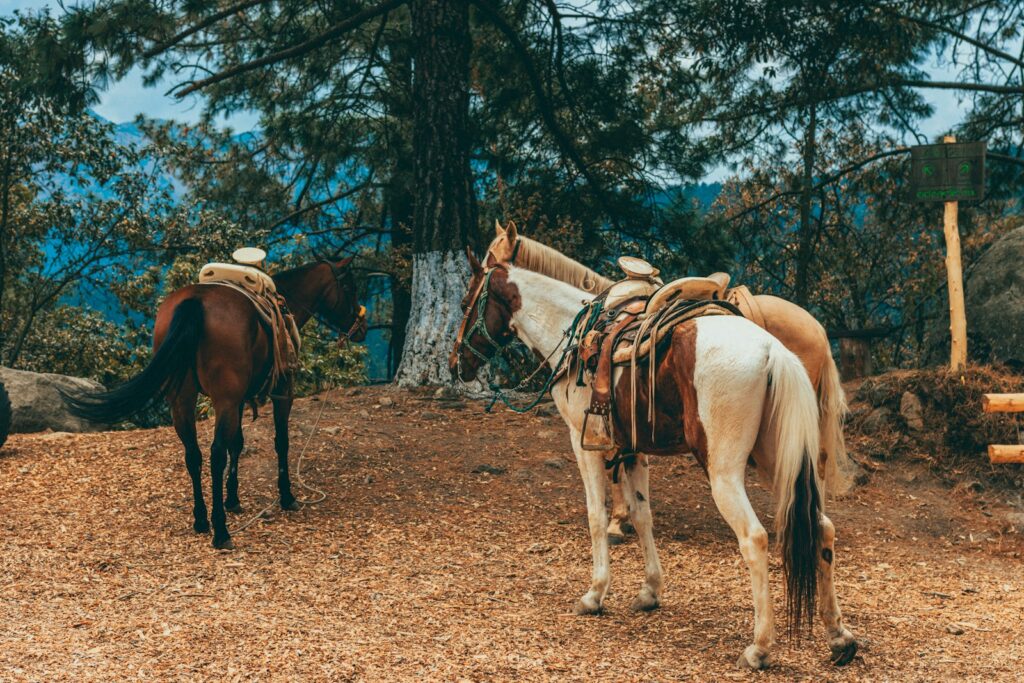
Before embarking on a horseback camping adventure, honestly evaluate both your horsemanship and camping skills. At minimum, you should be comfortable riding at a walk and trot over varied terrain, handling a horse in unpredictable situations, and recognizing signs of equine distress or health issues. Your camping abilities should include navigating with map and compass, setting up shelter efficiently, and understanding leave-no-trace principles. If you’re lacking in either area, consider shorter day trips to build your confidence, taking lessons with experienced guides, or joining established group rides that provide supportive learning environments. Remember that horseback camping combines two complex skill sets, and proficiency in both is essential for a safe experience.
Choosing the Right Horse
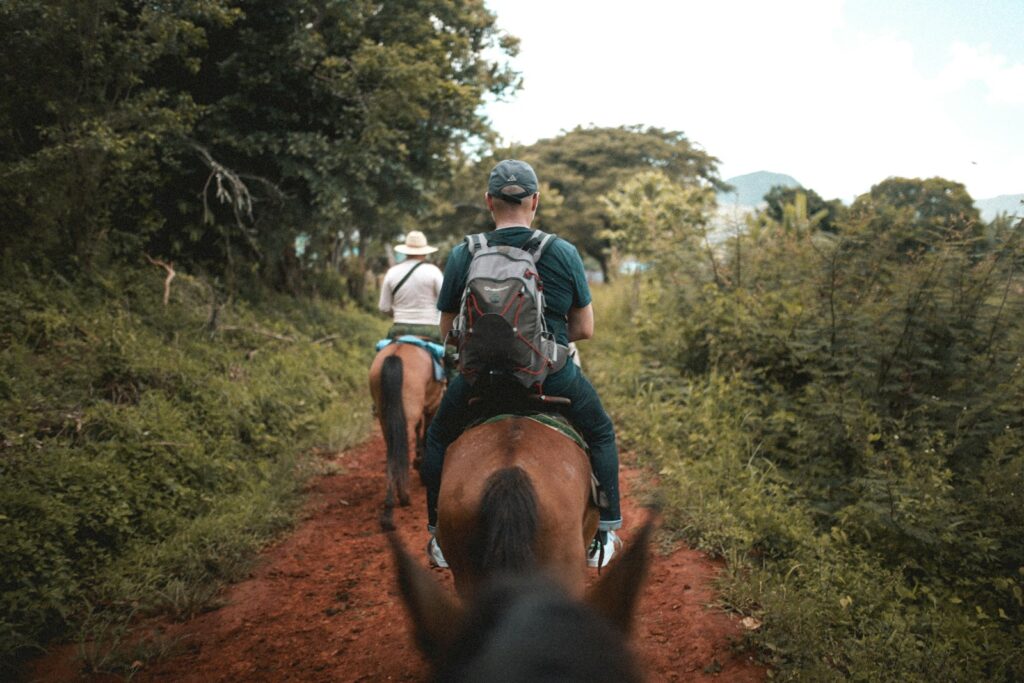
Not all horses are suited for the demands of wilderness camping, making your equine selection one of the most crucial decisions in your planning process. Ideal trail horses demonstrate steady temperaments, remaining calm when encountering wildlife, unusual terrain, or unexpected obstacles. Physical fitness is equally important—your horse should be conditioned for long-distance travel with adequate muscular development and endurance. Age and soundness factors should be considered carefully; while younger horses might have more energy, mature horses (8-15 years) often have the mental stability that makes for safer trail companions. If you don’t own a suitable horse, consider leasing from reputable outfitters who specialize in trail horses, and always arrange several practice rides before your trip to establish rapport and assess compatibility.
Essential Gear for Your Horse
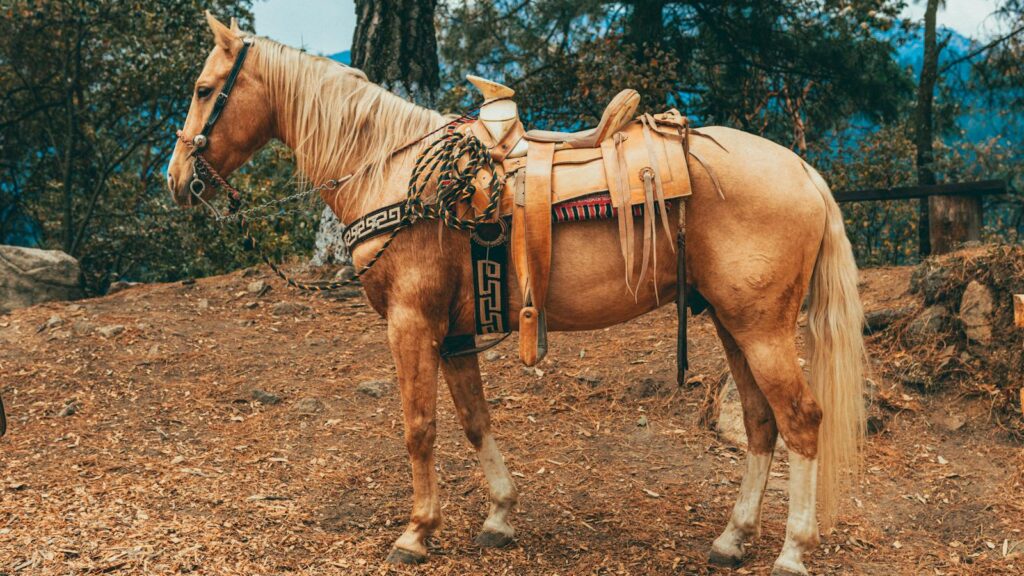
Proper equipment ensures your horse’s comfort and safety throughout your journey. Start with a well-fitted saddle designed for long-distance riding—western trail saddles distribute weight effectively, while endurance saddles often provide comfort for both horse and rider during extended hours. Pack saddles or panniers are necessary for carrying camping supplies, and these should be balanced to prevent soreness or injury. Essential horse gear includes a halter and lead rope, hobbles for controlled grazing, a high-line system for overnight containment, and protective boots if traveling over rocky terrain. Weather-appropriate horse blankets might be necessary for cold climates, while fly masks and repellent offer protection in buggy conditions. Always bring spare parts for tack repairs, as a broken cinch or rein could leave you stranded miles from assistance.
Human Camping Equipment Considerations
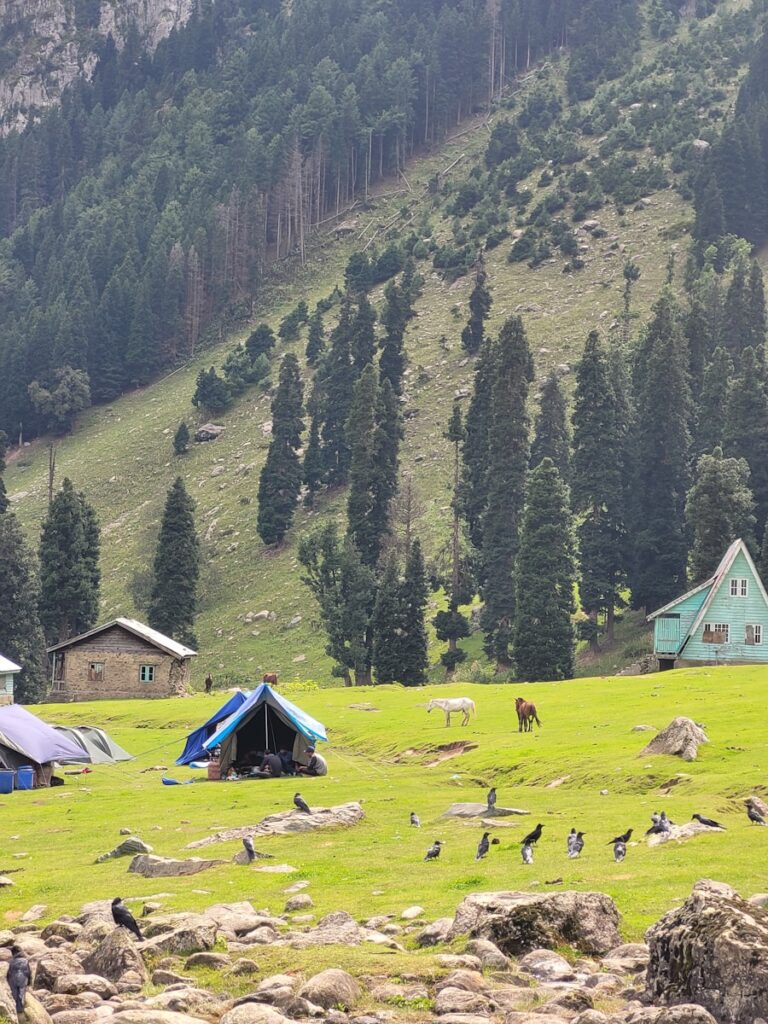
While horses provide transportation, your personal camping equipment must balance comfort with weight restrictions. Prioritize a lightweight but durable tent that can withstand various weather conditions and offers enough space for your gear. Sleeping systems should include insulated sleeping pads and appropriate temperature-rated sleeping bags, as many horse-friendly camping areas are at higher elevations where nights can be surprisingly cold. Cooking equipment should be minimal but functional—single-burner stoves, one multipurpose pot, and collapsible dishware save precious packing space. Clothing should follow the layering principle, allowing adaptability to changing weather conditions while requiring minimal space. Remember that every pound of personal gear means less capacity for essential horse supplies, so ruthless prioritization is necessary when packing.
Planning Food and Water
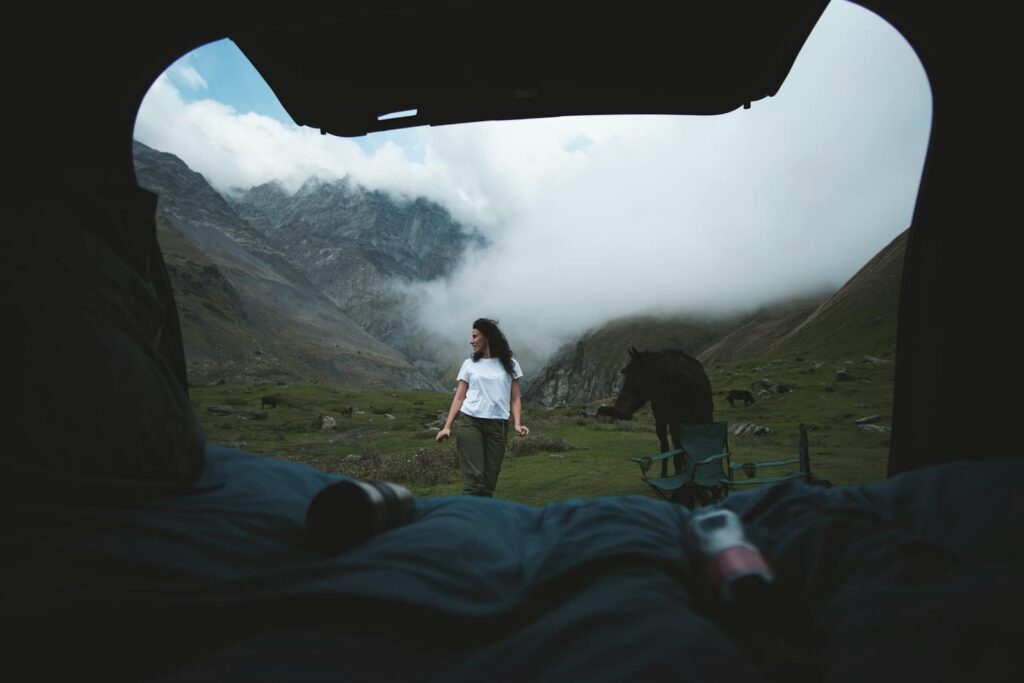
Nutrition planning for both yourself and your horse requires careful calculation and consideration of weight limitations. For horses, determine daily feed requirements based on work level and individual needs—typically 1.5-2% of body weight in forage daily, with supplemental grain if necessary for energy demands. Water is non-negotiable, with horses requiring 5-12 gallons daily depending on temperature and exertion levels. Research water sources thoroughly along your route, carrying personal water purification methods for yourself and knowing whether natural water sources will be accessible for your horse. Human food should focus on calorie-dense options that require minimal cooking—dehydrated meals, nuts, dried fruits, and energy bars offer nutrition without excessive weight. Plan for contingencies by packing at least one extra day of supplies for both you and your equine companion in case weather or other factors delay your return.
Selecting the Perfect Trail and Campsite
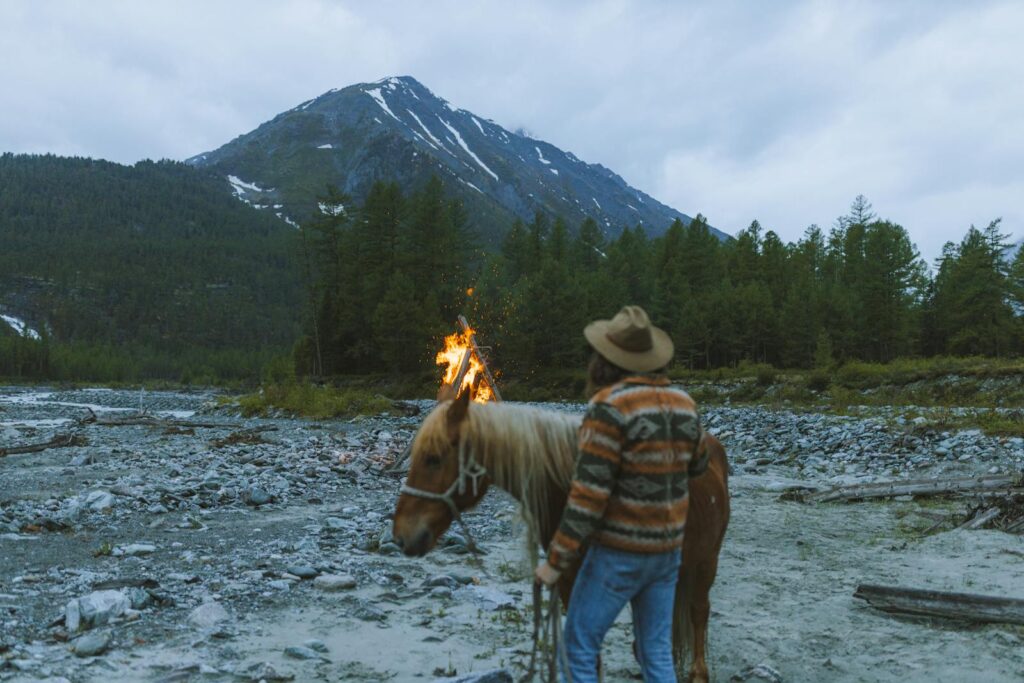
Not all beautiful trails are suitable for horses, making research critical before selecting your route. Look specifically for horse-designated trails that avoid steep scrambles, dangerous water crossings, or terrain too rocky for unshod horses. Federal lands, including National Forests and BLM areas, often offer extensive horse-friendly trail systems with designated equestrian campsites. These specialized sites typically provide essential features like hitching posts, high-line areas, and sometimes corrals. Contact local ranger stations or land management offices well in advance to confirm trail conditions, obtain necessary permits, and understand any special regulations for equestrian users. Online resources like TrailMeister and equestrian forums can provide recent first-hand accounts of trail conditions and campsite amenities from other horse campers.
Conditioning Your Horse for the Trip
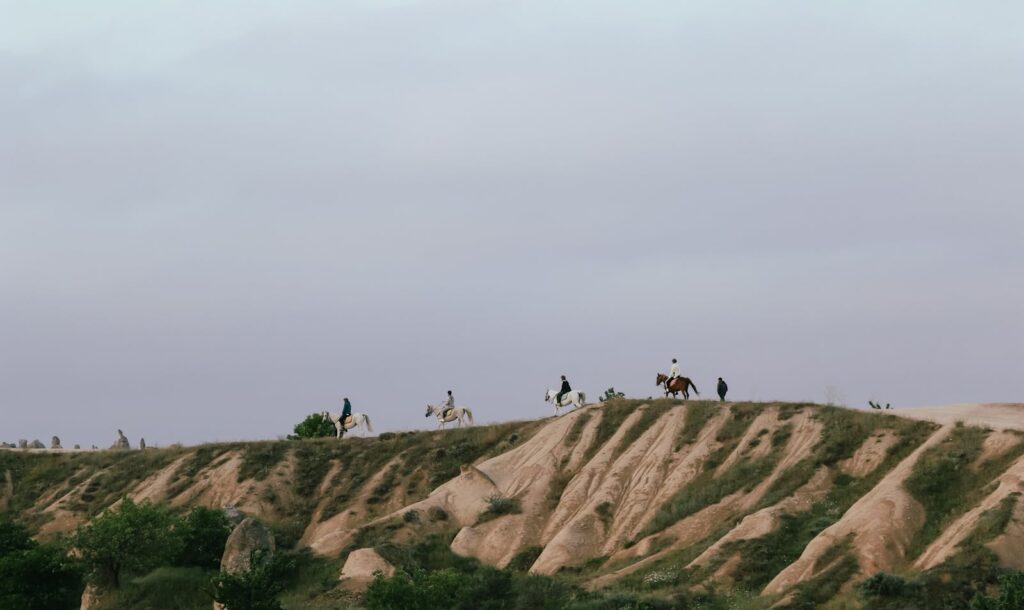
A progressive conditioning program is essential for preparing your horse for the physical demands of trail camping. Begin at least two months before your trip, gradually increasing distance and difficulty of training rides while monitoring your horse’s recovery time and overall condition. Incorporate hill work to build hindquarter strength and improve cardiovascular fitness, which proves invaluable on mountain trails. Expose your horse to various surfaces during training—rocky paths, water crossings, and muddy sections—to build confidence and sure-footedness. Practice with gradually increasing loads by adding weight to your saddle bags during training rides, allowing your horse to adapt to carrying camping gear. Monitor for signs of fatigue or discomfort like extended recovery breathing, reluctance to move forward, or subtle lameness, adjusting your conditioning plan accordingly to prevent injury.
Mastering Trail Riding Safety
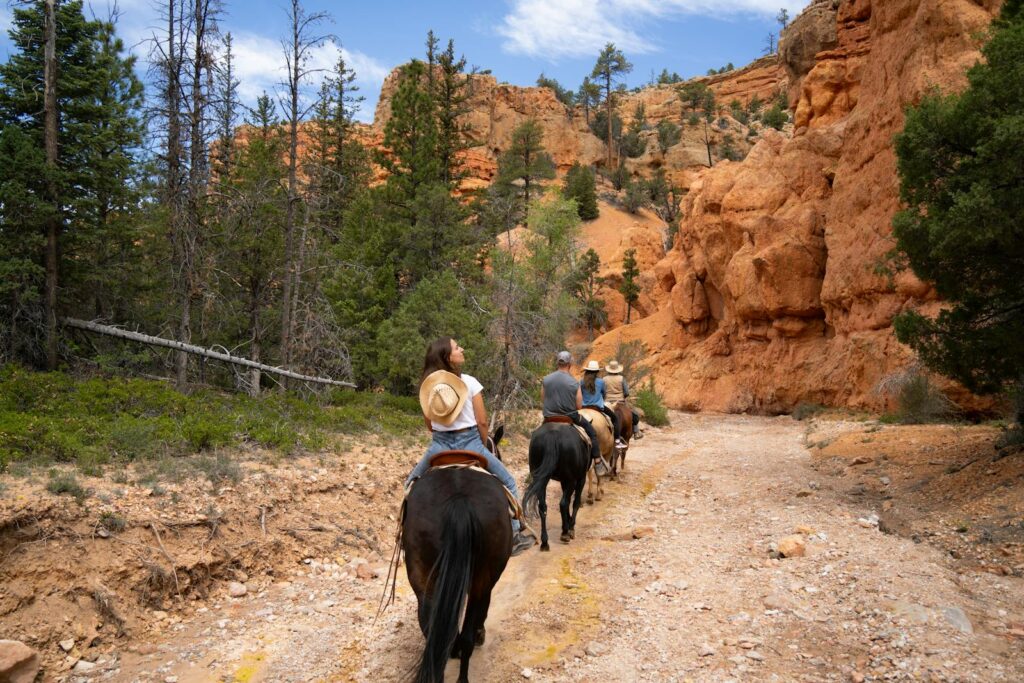
Safety on horseback requires both preventative measures and emergency preparedness, especially when traveling in remote areas. Always wear an approved riding helmet regardless of your experience level, as unpredictable terrain increases fall risks. Carry a comprehensive first aid kit with supplies for both human and equine emergencies, including wound care materials, pain relievers, and wraps. Communication tools should include devices that function without cell service—personal locator beacons, satellite messengers, or two-way radios depending on your route remoteness. Practice emergency dismounts and basic control exercises before your trip, ensuring you can handle your horse effectively if startled by wildlife or unexpected trail obstacles. Share your detailed itinerary with multiple trusted contacts, including expected campsites and return dates, with clear instructions on when to alert authorities if you don’t check in.
Understanding Leave No Trace with Horses
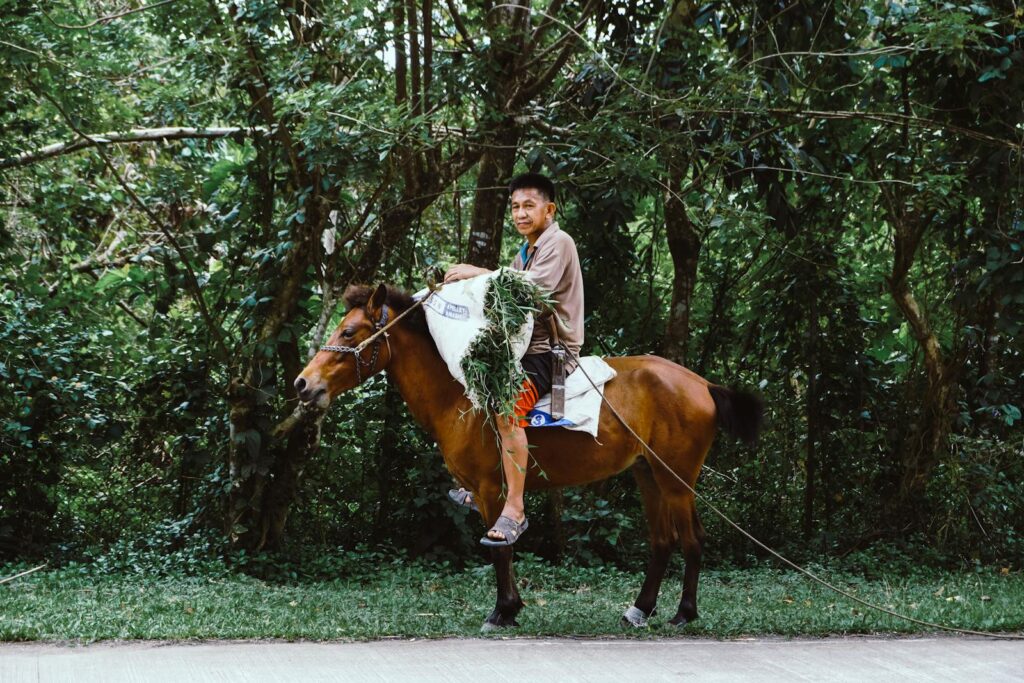
Responsible horseback camping requires adherence to enhanced Leave No Trace principles that address the additional impact horses can have on fragile ecosystems. Always use certified weed-free hay or feed pellets to prevent introducing invasive species to wilderness areas, starting this diet at least three days before your trip to clear any regular hay from your horse’s digestive system. Manage manure appropriately by scattering fresh droppings in inconspicuous areas away from water sources and campsites, or packing out manure in high-use or particularly sensitive areas. Prevent overgrazing by using highlines or hobbles to rotate your horse’s grazing locations, never allowing them to denude a single area. Stick exclusively to established trails designed for horses, avoiding the temptation to create shortcuts that can lead to erosion and habitat damage, even when trails become muddy or challenging.
Weather Preparedness and Seasonal Considerations
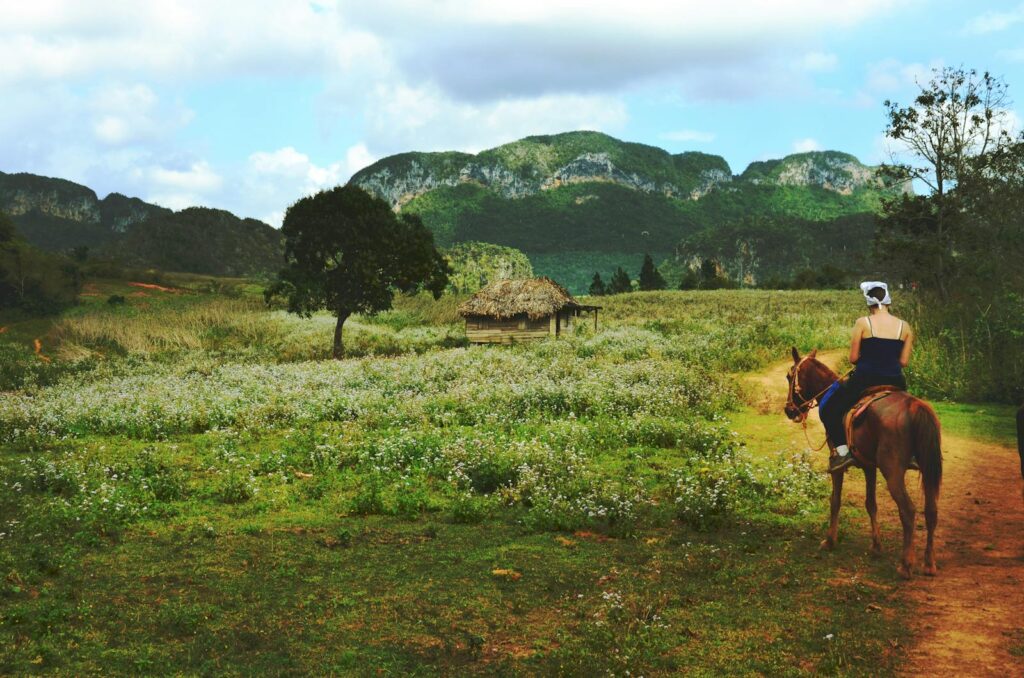
Weather conditions significantly impact horseback camping experiences, requiring thoughtful timing and preparation. Research historical weather patterns for your chosen area, understanding seasonal norms while preparing for extremes. Summer trips might access high mountain passes but require vigilance for afternoon thunderstorms that pose lightning dangers, while spring journeys offer wildflower displays but often come with muddy trails and unpredictable temperature swings. Monitor forecasts obsessively in the days leading up to your departure, and be prepared to alter or cancel plans if severe weather threatens. Pack appropriate clothing and shelter for both yourself and your horse based on potential conditions, including rain gear, sun protection, and insulating layers. Develop clear criteria for when to seek shelter or turn back, remembering that your horse’s safety and comfort should always outweigh destination goals.
Trip Documentation and Emergencies
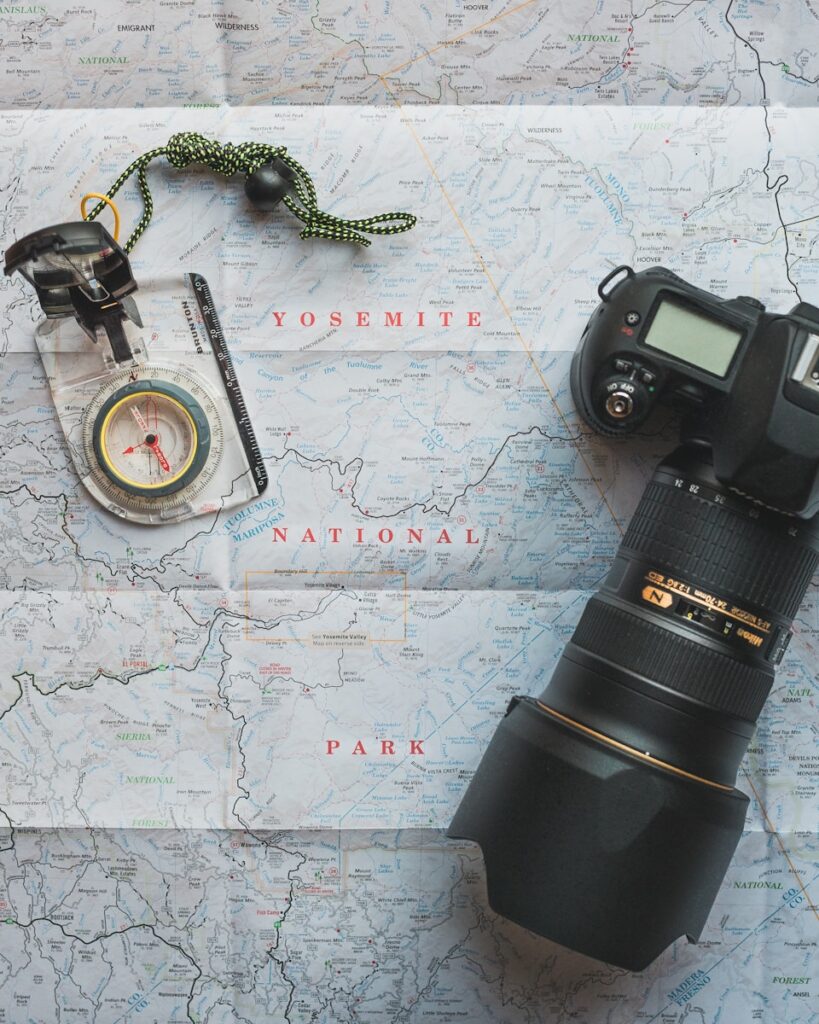
Properly documenting your horseback camping trip serves both practical safety needs and fulfills legal requirements. Carry appropriate identification for yourself and your horse, including vaccination records, brand inspections, or Coggins tests that may be required in certain regions or when crossing state lines. Photograph your horse from multiple angles before departure, documenting any existing marks or scars that could help identify your animal if separated. Create a detailed written trip plan including your intended route, estimated daily mileage, planned campsites, and contingency options in case primary destinations prove unsuitable. Leave copies of this plan with multiple emergency contacts along with clear instructions on when to contact authorities if you don’t check in as scheduled. Consider investing in GPS tracking devices specifically designed for equestrian use that allow loved ones to monitor your progress remotely while providing emergency communication capabilities.
Practical Tips from Experienced Horse Campers
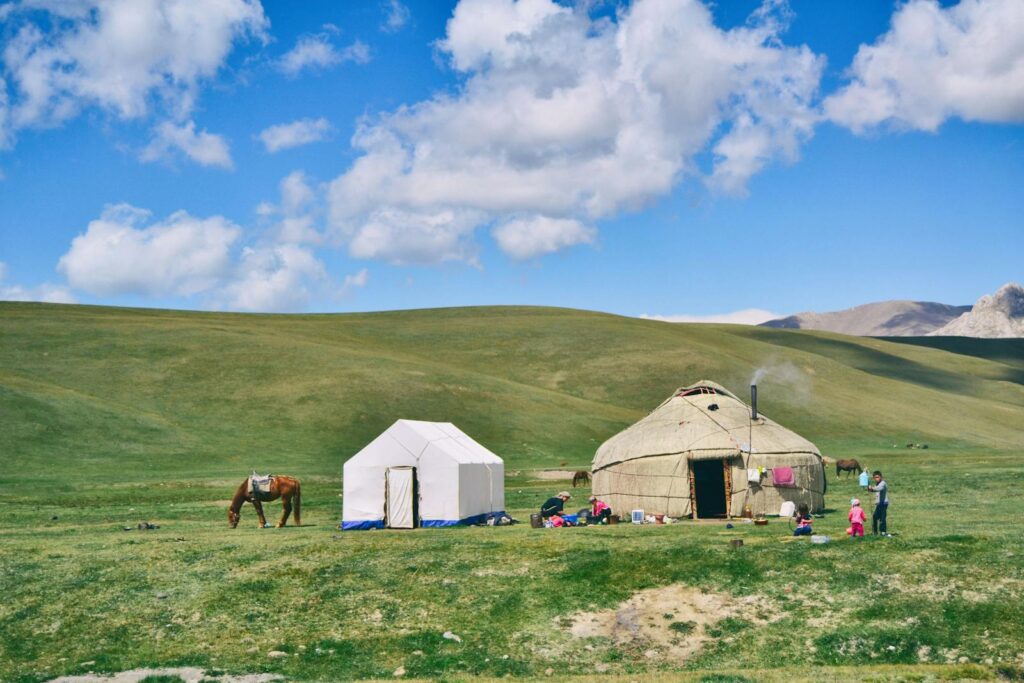
Seasoned horse campers have developed numerous practical strategies that enhance comfort and safety without adding excessive weight. Use brightly colored bandanas tied to your high line to increase visibility, preventing horses or humans from accidentally walking into the rope at night. Carry multipurpose items whenever possible—a horse’s smooth rubber feed pan can double as a washbasin, while a lightweight rain sheet can serve as emergency shelter or ground cover. Establish consistent routines that your horse can anticipate, such as setting up camp and feeding at similar times each day, which reduces anxiety in unfamiliar surroundings. Practice loading and unloading your panniers or saddlebags numerous times before your trip, ensuring weight distribution remains balanced and attachments are secure enough to prevent shifting during travel. Perhaps most importantly, remain flexible in your expectations—the unpredictable nature of horses and wilderness means that adapting plans is often necessary for a positive experience.
A horseback camping trip represents far more than just a vacation—it’s a journey into a traditional relationship between humans and horses that has shaped civilizations throughout history. The preparation may seem daunting, with considerations spanning equine health, wilderness skills, and specialized equipment, but the rewards justify every moment of planning. There’s an unparalleled satisfaction in watching your horse contentedly grazing near your tent after a day of exploration, knowing you’ve provided properly for their needs while they’ve carried you through beautiful landscapes inaccessible to vehicles. As you develop your skills through progressive trips, the partnership with your horse deepens into a mutual trust that enhances every aspect of the experience. Whether you’re drawn by the solitude, the challenge, or the unique perspective of seeing wilderness from horseback, proper preparation ensures your adventures will be remembered for their beauty rather than their difficulties.

